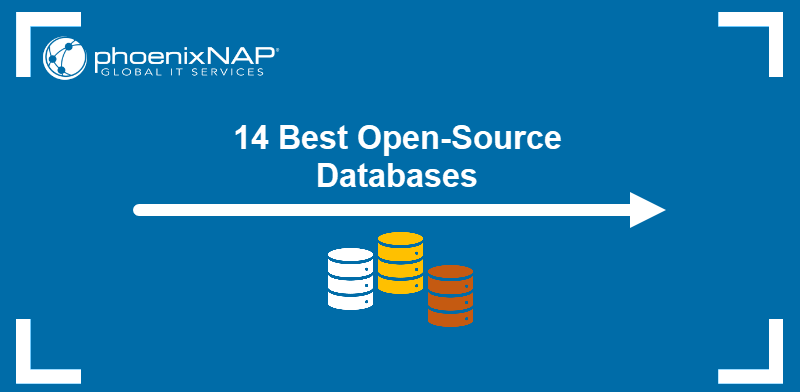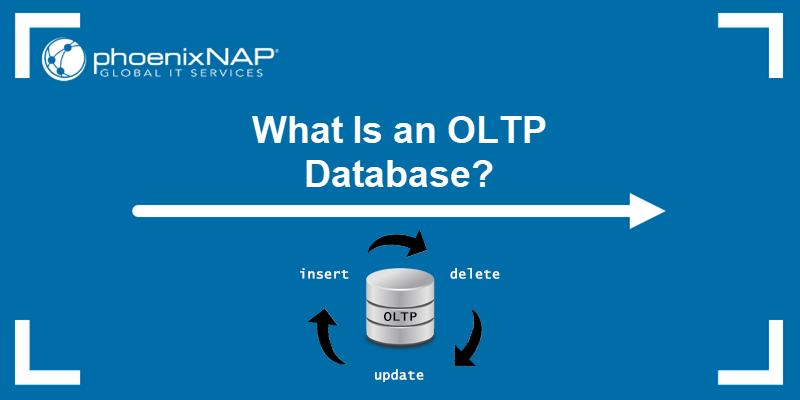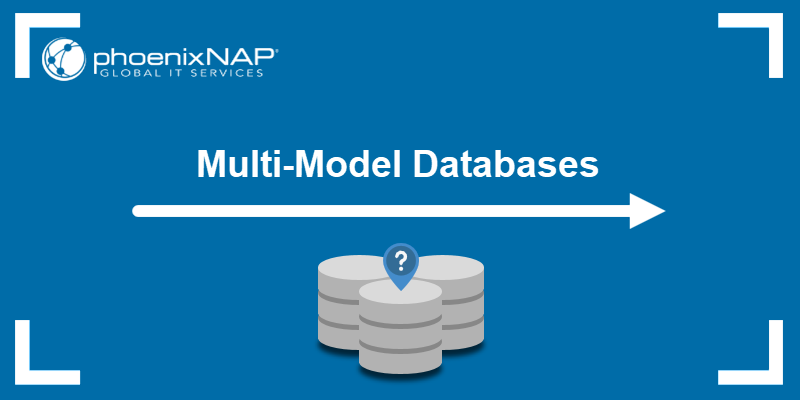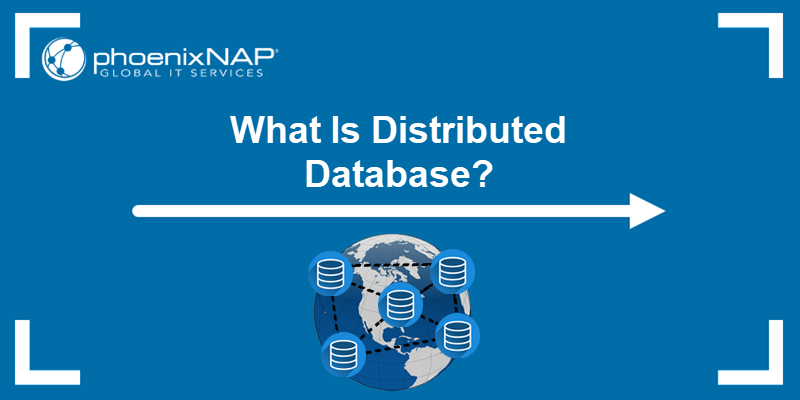Databases are an organized collection of related data records. Database management systems manage and manipulate information inside a database.
There are many different approaches to storing and modeling data, resulting in various types of databases.
This article provides an in-depth overview of the different database types available.
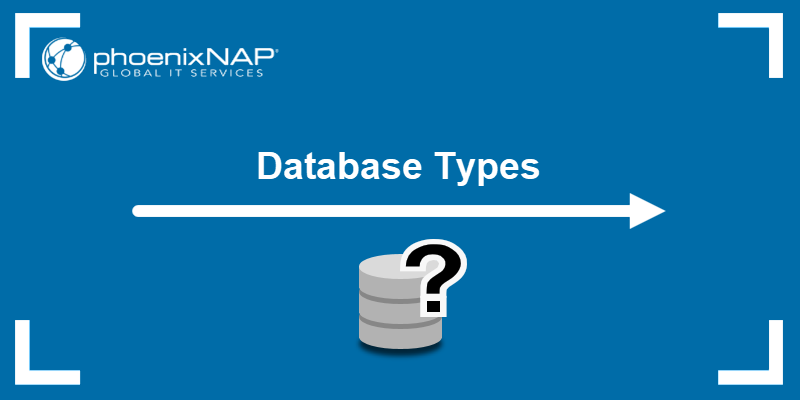
Database Model Types
The three general database types based on the model are:
- Relational databases.
- Non-relational databases (NoSQL).
- Object-oriented databases.
The difference between the models is how the information looks inside the database. Each model type has a different management system and data relationships.
Relational Database
The relational database model is the oldest and most extensively used database type. The three critical components of a relational database are:
- Tables. An entity type with relations.
- Rows. Records or instances of an entity type.
- Columns. Value attributes of instances.
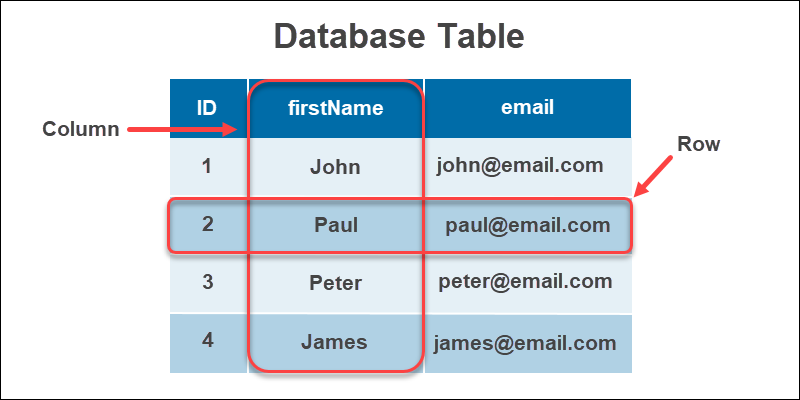
A relational database provides a set of data rows in response to a query. A query language, most commonly the Structured Query Language or SQL, helps create these data views.
Relational Database Features
The main features of a relational database are:
- ACID compliant. The database retains integrity while performing transactions.
- Range of data types. Provides the capability to store any data and carry out complex queries.
- Collaborative. Multiple users can access the database and work on the same project.
- Secure. Access is limited or restricted through user permissions.
- Stable. Relational databases are well-understood and documented.
What are Relational Databases Used For?
Relational databases are the most implemented database type. There are many use cases, some of which include:
- Online transaction systems. The database supports many users and frequent queries.
- IoT. Relational databases are lightweight and have the processing power needed for edge computing.
- Data warehouses. The critical component of the data warehouse architecture is data storage. Relational databases are easily integrated and optimized for massive queries from multiple sources.
Most Popular Relational Databases
There are countless commercial as well as open-source databases. The top ten most popular relational databases are:
- Oracle.
- MySQL.
- Microsoft SQL Server.
- PostgreSQL.
- IBM Db2.
Note: For more information on the design and the difference between Operational (OLTP) and Analytical (OLAP), please visit our article OLTP vs. OLAP.
Non-relational Database (NoSQL Database)
A non-relational database, or NoSQL ("Not Only SQL"), is a type of database that models and stores data differently from relational databases. Instead of tables, non-relational databases model relationships in their own way.
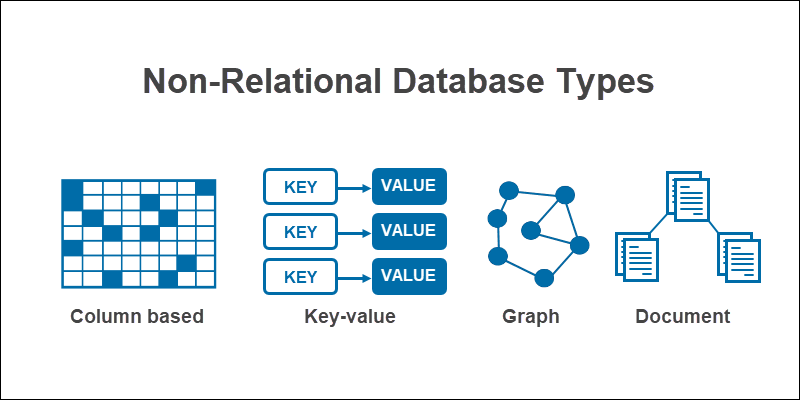
The four NoSQL database types are:
- Document.
- Key-value.
- Column-based.
- Graph.
Non-relational Database Features
The main features of non-relational databases are:
- Flexible. Handles structured, semi-structured, and unstructured data with ease.
- Scalable and responsive. Massive data storage scales well with on-demand servers and provides quick query responses.
- Zero downtime. High availability ensures minimal downtime due to near real-time data replication.
- Cloud compatible. The scalability of a cloud computing architecture incorporates perfectly with non-relational databases.
- Multiple data structures. Different data types, as well as multi-model database formats, are possible.
Note: Learn everything you need to know about structured and unstructured data in our article Structured vs. Unstructured Data: Understanding Differences.
What are Non-relational Databases Used For?
Non-relational databases work best with variable data structures and massive amounts of data. Some use cases include:
- Real-time systems. A non-relational database combines the operational and analytical database systems into one.
- Personalized experience. Elastic scaling syncs with variable data amounts.
- Fraud detection. High performance is vital in fraud detection. Non-relational databases are responsive and meet the low latency requirements of financial systems.
Most Popular Non-Relational Databases
The ten most popular non-relational databases are:
Object Database
An object database (or object-oriented database) represents data as objects, similar to object-oriented programming. The critical components of an object-oriented database are:
- Objects. The basic building blocks for storing information.
- Classes. The schema or blueprint for an object.
- Methods. Structured behaviors of a class.
- Pointers. Help access elements of a database and establish relationships.
Object databases combine object-oriented programming and relational database concepts.
Object Database Features
The main features of object databases are:
- ACID transactions. All transactions are complete without conflicting changes.
- Transparent persistence. Object databases integrate seamlessly with object-oriented programming languages.
- Complex and custom data types. User-defined classes allow for custom as well as complex data types to exist.
- Accessible. Data is easy to save and retrieve.
- Easier modeling. Real-world problems and information are closely related to objects, which makes complex problems easier to model.
What Are Object Databases Used For?
Object databases perform best with complex data types where one entry includes a lot of information. Some everyday use cases for this database model type are:
- High-performance applications. Applications where fast data retrieval is vital benefit from object databases since data is stored and retrieved as-is.
- Scientific purposes. Scientific data, as well as calculations, are complex. Storing complex information and fast retrieval are used in science.
- Complex data structures. Due to permanent persistence with objects, the expansion of complex data is accessible, eliminating the need to rework the database model.
Most Popular Object Databases
Currently, the top ten most popular object databases are:
- DB4o.
- ObjectStore.
- Matisse.
- Gemstone/S.
- ObjectDB.
- ObjectDatabase++.
- Objectivity/DB.
- Versant.
- Perst.
- Jade.
12 Types of Databases
Different database types are essential for addressing specific needs. They manage and store data in various formats, and knowing these differences can help organizations select the best solution for their requirements.
The sections below describe different database types in greater detail.
Hierarchical Database
A hierarchical database uses a tree-like structure to organize data. Each record has a single parent, and the relationships are a hierarchy. The model helps represent one-to-many database relationships.
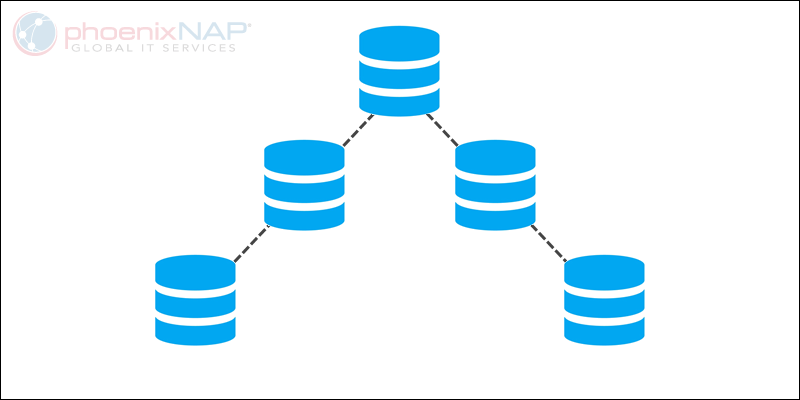
Hierarchical Database Features
Its main features are:
- Tree structure. Data is organized with parent-child relationships.
- Single-parent rule. Each child has only one parent to ensure a clear hierarchy.
- Traversable. Data access requires navigating from the root to the desired node.
- File or table storage. Records are in individual files or tables, depending on the implementation.
- Visually clear. The structure is easy to visualize and review.
Hierarchical Database Advantages
The main advantages are:
- Data integrity. Data integrity is easy to maintain due to every child record having exactly one parent.
- Performance. Queries are faster for specific data structures due to simple relationships.
- Simplicity. The structure is easy to design and maintain.
Hierarchical Database Disadvantages
Its main disadvantages are:
- Redundancy. Data duplication happens if the data is not hierarchical by nature.
- Inflexible. Adjusting the structure is difficult, and it is less adaptable to complex relationships.
- Difficult to scale. Due to its rigidity, the model becomes hard to manage and scale as data grows.
Popular Hierarchical Databases
Popular hierarchical databases include:
- IBM's Information Management System (IMS).
- XML databases.
- Windows Registry.
- Lightweight Directory Access Protocol (LDAP).
Network Database
A network database is a data model that has multiple relationships between records. The model uses a graph-like structure to connect records and enable complex relationships.
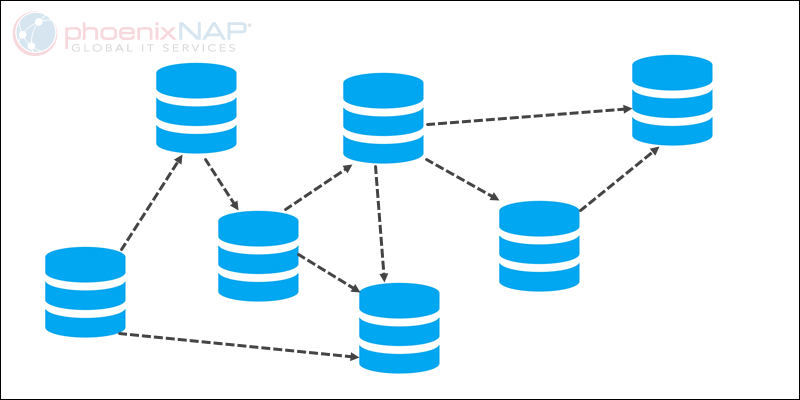
Network Database Features
Its main features are:
- Graph structure. Data is organized into nodes and edges to represent entities and their relationships.
- Many-to-many relationships. Records can have multiple parent-child connections.
- Pointers. Relationships are defined using pointers.
- Efficient querying. Queries with complex relationships are faster due to pre-defined connections.
- Standardized model. The model is based on the Conference on Data Systems Languages (CODASYL) specifications.
Network Database Advantages
The main advantages are:
- Flexible. The model supports many-to-many connections, which is ideal for complex data structures.
- Efficient data querying. Pointers and pre-defined paths help optimize query performance.
- Data integrity. Relationships are explicitly defined to ensure data consistency.
Network Database Disadvantages
Its disadvantages include:
- Complex design. Designing and maintaining the structure requires significant expertise.
- Pointer dependency. Navigation relies on pointers, and modifications are challenging.
- Limited adoption. Modern database administrators prefer more user-friendly approaches like relational or NoSQL databases.
Popular Network Databases
Popular network databases include:
- Integrated Data Store (IDS).
- Integrated Database Management System (IDMS).
- Unisys DMS-1100.
Cloud Database
A cloud database is a hosting solution given by a third-party provider. The pay-as-go solution offers database-as-a-service (DBaaS) to eliminate physical data center setups. This agile approach minimizes upfront investments for hardware and data space while quickly expanding as more resources are required.
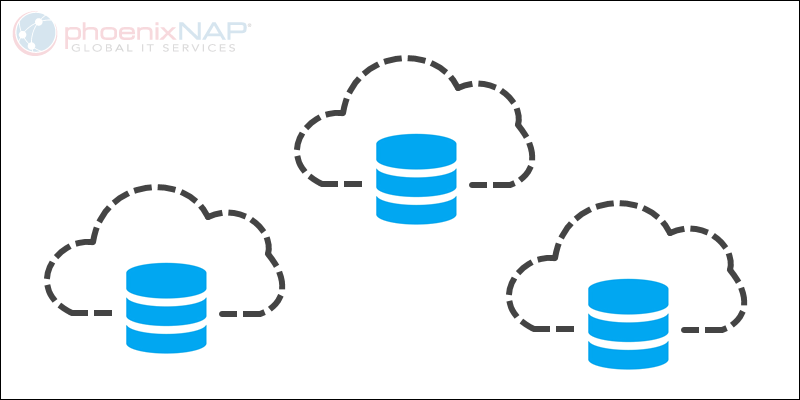
Cloud Database Features
The best features of a cloud database are:
- Scalability. Cloud databases are flexible. Increasing or decreasing resources (e.g., storage, compute power) is quick due to virtualization.
- Management flexibility. The provider manages the infrastructure, which minimizes the administrative burden. However, there are also options for self-management and outsourcing maintenance.
- Cost. The pay-as-you-go model ensures you pay only for the used resources. The cost of investing in technical staff, as well as maintenance, is minimized.
- High availability. Cloud databases are built for redundancy and failover to ensure continuous uptime.
- Security and compliance. Robust security measures and encryption are often included to ensure compliance with various security standards.
Cloud Database Advantages
The main advantages of cloud databases are:
- Reduced CapEx. Cloud databases eliminate physical infrastructure and reduce upfront costs.
- Easy to use. Setup, configuration, and management are all simplified, which is ideal for businesses that lack in-house experts.
- Rapid scalability. Traffic spikes and growth are easier to handle due to on-demand resources.
- Disaster recovery. Backup and redundancy options improve data protection and recovery capabilities.
Cloud Database Disadvantages
The main disadvantages are:
- Provider dependency. Businesses rely heavily on the service provider.
- Data transfer costs. Moving large amounts of data can result in significant costs.
- Limited control. There is less control over database configurations and hardware.
Popular Cloud Databases
Notable examples of cloud databases include:
- Amazon Relational Database Service (RDS).
- Google Cloud SQL.
- Microsoft Azure SQL Database.
- MongoDB Atlas.
On-Premises Database
An on-premises database resides in-house. All the software, infrastructure, and management are maintained locally. With large-scale enterprises, the storage grows to a local data center over time. The setup is ideal for organizations focusing on control, compliance, and security.
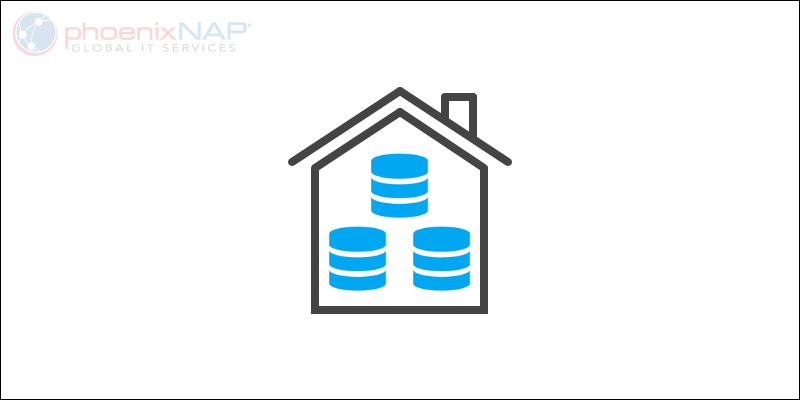
On-Premises Database Features
The notable features of on-premises databases are:
- Security. On-premises databases are the best solution for storing sensitive information. The data never leaves the organization's environment.
- Control. The enterprise has complete ownership over the data, providing granular control over access, configuration, and management.
- Compliance. Regulations, such as HIPAA compliance or GDPR, require knowing the location of sensitive data at any given moment. Compliance is easier to meet with on-premises databases.
- Customizable. Organizations have control over their hardware and software. They can address specific performance or operational needs.
On-Premises Database Advantages
Databases that are on-premises have the following advantages:
- Improved security. On-premises systems provide complete control over security measures and reduce vulnerabilities from third-party providers.
- Data sovereignty. Data remains in specific locations or legal boundaries.
- Performance optimization. Custom configurations allow for optimizing performance based on the requirements.
- Long-term efficiency. Initial setup costs are higher, but long-term operational costs are lower for consistent workloads.
On-Premises Database Disadvantages
The main disadvantages are:
- High upfront costs. Infrastructure and equipment require significant initial investments.
- Maintenance. The organization is responsible for maintaining all hardware, software, and updates.
- Scalability challenges. Growth requires purchasing and installing new equipment, which is time-consuming and expensive.
Popular On-Premises Databases
Popular on-premises database choices include:
- Oracle Database.
- Microsoft SQL Server.
- MySQL Community Edition.
- PostgreSQL.
- IBM Db2.
Centralized Database
A centralized database is stored and managed in a single physical location. The centralized repository is available to other devices through a network, which enables data sharing across an organization. Users have access via a networked terminal or a similar system.
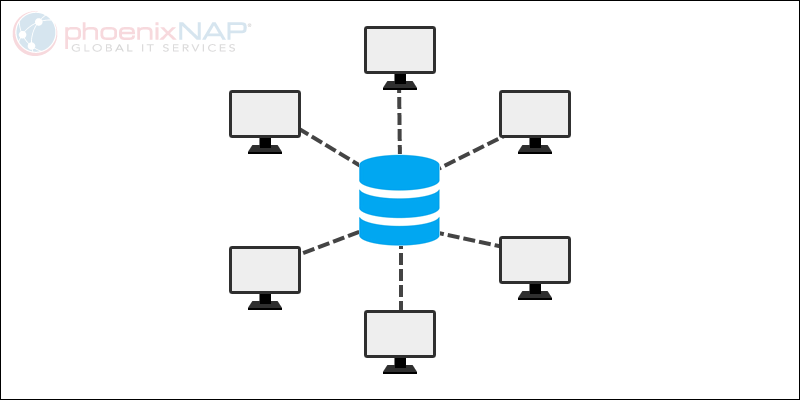
Centralized Database Features
The main features of a centralized database are:
- Data integrity. Storing data in one location maximizes data integrity and reduces redundancy. Information accuracy and reliability are enhanced.
- Security. A single access point increases data safety by focusing on security measures at a single location.
- End-user friendly. Data access and updates are immediate with a centralized database.
- Cost-effective. The labor, power supply, and maintenance are all reduced to a minimum through a centralized system.
- Data preservation. A fault-tolerant setup is possible through disaster recovery solutions.
Centralized Database Advantages
Some advantages of a centralized database are:
- Simpler management. Database administrators focus on a single location, which is less complex to manage.
- Data consistency. Since all data resides in a single location, synchronization issues do not exist. Reporting and analytics are accurate due to a single source.
- Resource utilization. Hardware and software resources are all at a single location, which minimizes waste and data duplication.
Centralized Database Disadvantages
The main disadvantages of using a centralized database are:
- Single point of failure. If the central system goes down, database access is disrupted for all users.
- Scalability. Adding users or increasing capacity becomes straining on the central system and leads to performance bottlenecks.
- Network dependency. The system requires a highly available network to access the database without interruptions.
- High initial costs. Creating a centralized system requires investments in hardware, software, and infrastructure.
Popular Centralized Databases
The most popular database systems for centralized databases are:
- IBM Db2.
- Oracle Database.
- Microsoft SQL Server.
- PostgreSQL.
- MySQL Enterprise Edition.
Distributed Database
Distributed databases store information across different physical sites. The database resides on multiple CPUs on a single site or across various locations. The locations are connected, and the information appears as a single database for end-users.
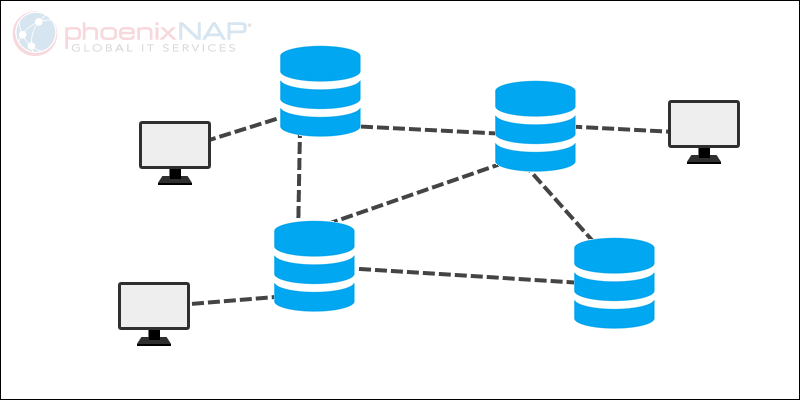
Distributed Database Features
The most prominent features of a distributed database are:
- Location independence. The physical location of the database spreads out across multiple sites.
- Query processing distribution. A complex query splits into multiple locations, dividing tasks between different CPUs.
- Distributed transactions. Multiple storage locations provide a distributed recovery method. Commit protocols exist in cases of numerous transactions.
- Network linking. The distributed databases link through a network where the storage and end-users communicate.
- Seamless integration. Although not physically connected, distributed database parts connect into one logical database.
Distributed Database Advantages
Advantages when using distributed databases include:
- Reliability. Data spreads across different sites. The model ensures that failures in one location do not affect the entire system.
- Scalability. Adding processing power or architecture is simpler due to a distributed architecture.
- Fast access. Data that resides closer to the user reduces latency and improves performance. Queries are processed locally, which minimizes network traffic.
- Flexibility. Distributed databases support global operation and enable local access.
Distributed Database Disadvantages
The key disadvantages of distributed databases are:
- Complexity. Managing and synchronizing data is challenging and requires advanced systems.
- Increased costs. The infrastructure and network are expensive, especially for global setups.
- Security. Multiple access points and distributed storage increase the risk of a data breach.
- Latency. Inconsistent network connections or physical distances can delay data retrieval and updates.
Popular Distributed Databases
Popular distributed database options include:
- Cassandra.
- MongoDB.
- Google Cloud Spanner.
- Couchbase.
Operational Database
An operational database manages and controls the basic operations within a business. The database is known as an online transaction processing or OLTP database. It collects data directly from the source in real time, providing a view of daily transactions.
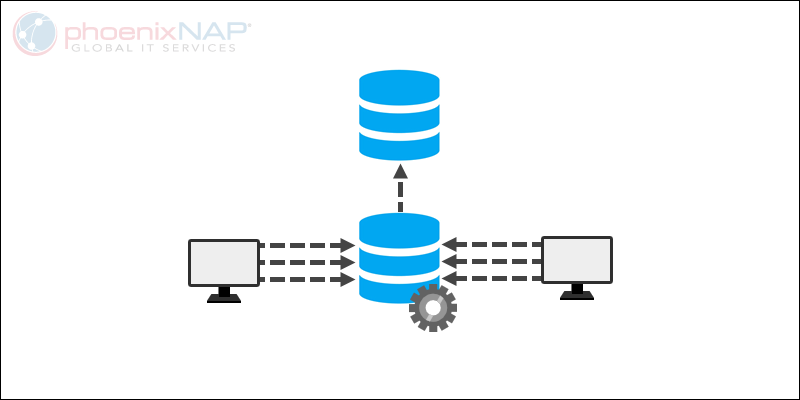
Operational Database Features
The database type has the following features:
- ACID compliant. Preserving the accuracy and integrity of each transaction is necessary for data organization.
- Fast processing. Operational databases require fast processing due to thousands of simultaneous requests.
- Small storage. Transactional information is only stored temporarily. Operational databases are a stepping stone before the data is archived in a data warehouse or analytical system.
- Regular backups. Collecting and storing data requires constant backups, making legal compliance essential.
Operational Database Advantages
The advantages of an operational database are:
- Real-time access. The database provides instant access to ongoing operations, which allows quick decision-making.
- Reliability. Data corruption and loss are reduced due to transactional integrity.
- Transaction optimization. The database handles frequent and small-scale operations by design.
- Scalability. Quickly adapt to larger demands, more users, and additional transactions.
Operational Database Disadvantages
The disadvantages are:
- Limited analytics. Operational databases focus on real-time transactions rather than complex analytical queries.
- High maintenance. Requires regular updates, backups, and monitoring to maintain reliability.
- Infrastructure costs. High-speed and real-time databases require significant software and hardware investments.
- Storage constraints. Temporary storage does not apply to all business situations.
Popular Operational Databases
- MySQL.
- PostgreSQL.
- Oracle Database.
- Microsoft SQL server.
- IBM Db2.
Analytical Database
Analytical databases offer a unified view of all business data. A complete overview is essential for planning, reporting, and making decisions. The database is known as an online analytical processing (OLAP) database. They are essential for business intelligence (BI) and strategic planning.
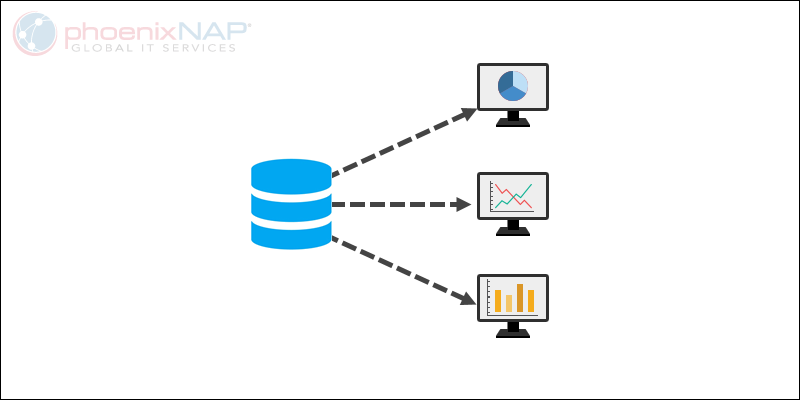
Analytical Database Features
The features of an analytical database are:
- Distributed workload. The data comes from different operational systems distributed across nodes.
- Multi-dimensional. Enterprise information is structured into dimensions through data aggregation.
- Query performance. Data denormalization improves query performance for time-intensive actions.
- Horizontal scalability. Analytical databases must scale out as the requirements for an enterprise to grow.
- Data integration. Combines data from many sources into one complex database to provide accurate analysis.
Analytical Database Advantages
The main advantages are:
- Informed decision-making. The database provides insights by analyzing business data. It enables advanced analytics, trend prediction, and strategic planning.
- High performance. Works best for complex, read-heavy operations on large datasets.
- Centralized view. Combines data from multiple sources to provide a comprehensive view.
- Scalable architecture. Supports growth without compromising performance.
Analytical Database Disadvantages
Disadvantages of analytical databases include:
- Costly. Infrastructure, storage, and computational requirements are expensive for analytical databases.
- Complexity. Maintaining data from different sources requires specialized resources and expertise.
- Limited real-time capabilities. Analytical databases are optimized for batch processing.
- Latency. Integrating large datasets can result in analysis delays.
Popular Analytical Databases
Some popular analytical databases include:
- Google BigQuery.
- Amazon Redshift.
- Snowflake.
- Taradata.
- Microsoft Azure Synapse Analytics.
Graph Database
Graph databases are optimized for managing relationships between data points. It structures data as nodes, edges, and properties. Graph databases are ideal for social networks, fraud detection, recommendation systems, and network analysis.
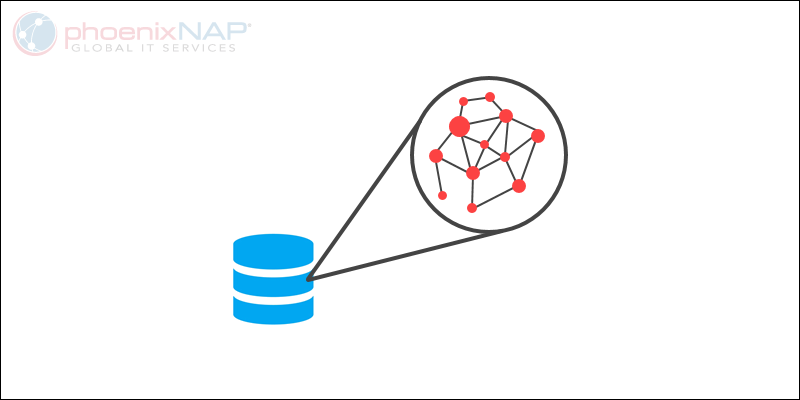
Graph Database Features
The features of a graph database are:
- Node and edge structure. The database uses nodes and edges to represent data, which is a natural model for connected entities.
- Relationship-oriented. Retrieves data based on relationships, even with complex datasets.
- Flexible schema. Does not rely on a fixed schema and allows dynamic and evolving data models.
- Graph algorithms. Supports specialized path-finding algorithms, clustering, and centrality analysis.
Graph Database Advantages
The main advantages of graph databases include:
- Relationship focus. The focus is essential when analyzing data where relationships are critical.
- Intuitive data model. The graph structure is similar to real-world entities and their connections.
- Real-time analysis. Complex queries and traversals happen in real-time, so it's suitable for interactive applications.
- Scalability. Handles growing data and relationships with ease.
Graph Database Disadvantages
Some disadvantages include:
- Specialized. The database is not intended for transactional or tabular data.
- Complexity. Requires a learning curve for those unfamiliar with graph data models and their query languages.
- Limited integration. There are fewer tools and integrations compared to other database types.
- Performance. Although they are optimized for relationship queries, the database is slow for simple operations.
Popular Graph Databases
Some well-known and popular graph databases are:
- Neo4j.
- Amazon Neptune.
- ArangoDB.
- OrientDB.
Key-Value Database
A key-value database is an efficient database that stores data as key-value pairs. Every key is a unique identifier for a corresponding value. The value can be a string, object, or a more complex data type. The simple design is ideal for caching, session management, real-time analytics, and similar scenarios.
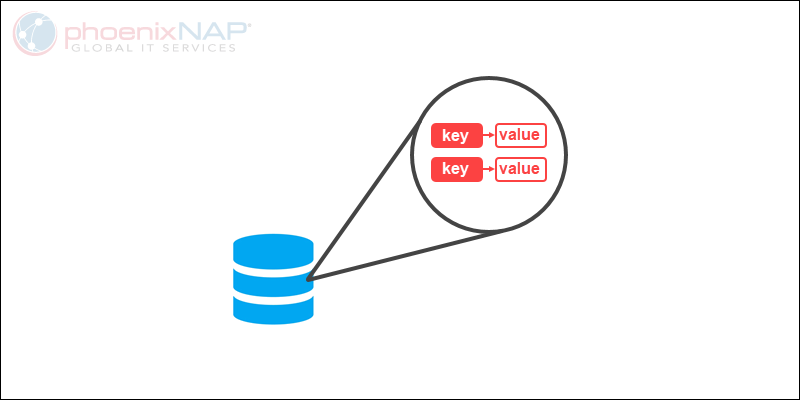
Key-Value Database Features
The main features of a key-value database are:
- Simplicity. The data store format is straightforward and enables fast lookups.
- Performance. The database type is optimized for high-speed read and write operations.
- Scalability. Horizontal scaling enables expanding the database to accommodate a growing dataset.
- In-memory processing. Many key-value databases support in-memory processing, which results in fast data access.
Key-Value Database Advantages
The advantages of using a key-value database are:
- Speed. The database is swift for read and write operations. It's ideal for real-time applications.
- Easy to use. A simple data model reduces database complexity for developers.
- Versatility. Key-value databases are suitable for various use cases.
Key-Value Database Disadvantages
Some limitations when using key-value databases are:
- Lack of structure. Enforcing relationships or constraints is challenging due to how data is organized.
- Limited querying capabilities. The database is not suitable for complex queries and analytics.
- Data retrieval constraints. Finding a value requires knowing the exact key, which is inflexible.
- Memory overhead. Some key-value databases are memory-heavy, which increases operational costs.
Popular Key-Value Databases
Popular key-value databases include:
- Redis.
- Couchbase.
- Aerospike.
- Amazon DynamoDB.
Document Database
A document database is a non-relational database designed to work with semi-structured data as documents. Every document uses a format such as JSON or XML to represent data. It is suitable for modern application development and highly flexible due to this format. Document databases are often used in content management systems (CMS).
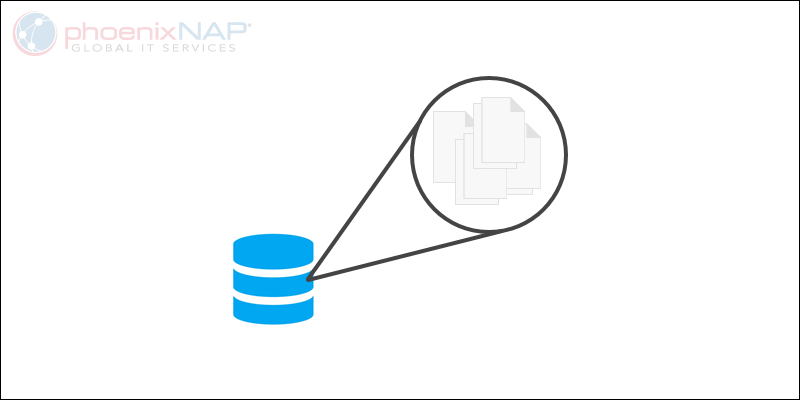
Document Database Features
Key features of a document database are:
- Document storage. Data is stored as documents, enabling a complex hierarchical structure.
- Flexible schema. Documents can have different structures, which is convenient for iterative and agile development.
- Rich querying. Document databases support advanced queries with full-text search, aggregation, and filtering.
- Built-in indexing. Efficient indexing results in faster query performance.
Document Database Advantages
The main benefits of using a document database are:
- Flexibility. The schema-less structure enables rapid development.
- Simple. Documents align closely with application data structures.
- Scalability. Easily scales out to handle large datasets and high-traffic applications.
- Performance. Works excellent for read-heavy and write-heavy workloads.
- Unstructured data support. Handles various data formats efficiently, including multimedia, JSON, and semi-structured data.
Document Database Disadvantages
Some disadvantages of a document database are:
- Complex queries. Queries are powerful but complex for deeply nested data.
- Redundancy. Requires normalization to reduce duplicate data and storage requirements.
- Limited transaction support. The database does not guarantee ACID compliance across documents.
- Consistency. Distributed setups face a trade-off with availability.
Popular Document Databases
The most popular document databases are:
- MongoDB.
- CouchDB.
- Amazon DocumentDB.
- RavenDB.
- MarkLogic.
Time-Series Database
Time-series databases (TSDB) work with timestamped data. The database is ideal for collecting and processing data over time. Time-series databases are often used in monitoring, analytics, and scientific research.
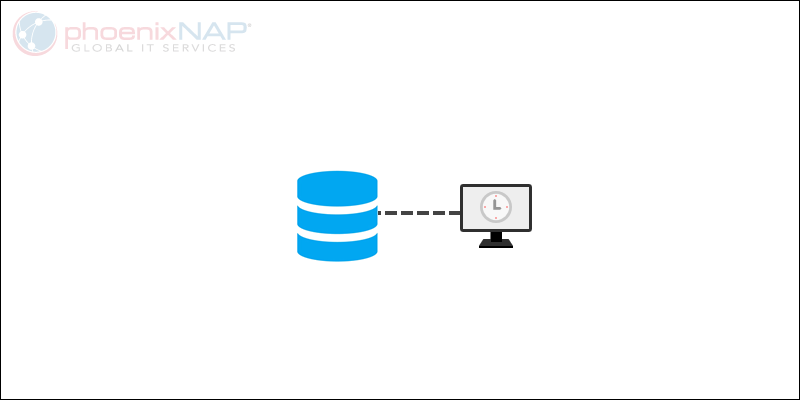
Time-Series Database Features
The main features of a time-series database are:
- Timestamped data. Stores data as time-series entries. Each record has a timestamp, which is convenient for chronological views.
- Efficient compression. The database uses optimized storage techniques to reduce the size of data.
- High throughput. Able to handle large amounts of data in real-time.
- Built-in analytics. Provides various functions for analyzing trends.
- Retention policies. Supports data pruning by retaining data for specific periods.
Time-Series Database Advantages
The main advantages of using a time-series database are:
- Focus on time-series data. The database storage and queries are optimized for fast data access and analytics.
- Scalability. Handles high data rates and massive datasets easily.
- Efficient storage. Compression algorithms reduce storage costs.
- Real-time views. Idea for applications that require instant insights from live data.
Time-Series Database Disadvantages
Its disadvantages are:
- Limited use. It is primarily suited for time-series data. It is not intended for general database uses.
- Complex querying. Queries that are not based on timestamps are complex.
- Retention trade-offs. Pruning policies can result in data loss, which can be valuable.
- Specialized. Requires specific expertise for integration and maintenance.
Popular Time-Series Databases
Some popular time-series databases are:
- InfluxDB.
- TimescaleDB.
- Prometheus.
- OpenTSDB.
- Graphite.
Conclusion
This guide showed different database types that are available today. All database types have their respective usage domain. None of the database types replace a different kind of database, and using multiple systems provides versatility over data management.
To learn how to create, retrieve, update, and manage data in a database, read our article on DBMS - top 25 database management systems.
